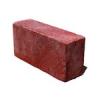Hi All,
I am currently trying to create a tactical pathfinding system using Unity's built-in Navigation. The problem is I can't find an elegant enough solution to my problem. This is what I am trying to accomplish:
The Red AI needs to navigate behind those square obstacles in order to tactically navigate to its goal.
This is what I have achieved so far:
In the above video I have used the NavMeshSurface component. The high-area cost (ie. pink mesh) is generated only if I re-build the NavMesh. I don't want to re-build the NavMesh during runtime, because I have a fairly large level.
My Question:
Is there any way for the Red AI to do tactical pathfinding on top of Unity's Navigation System?










